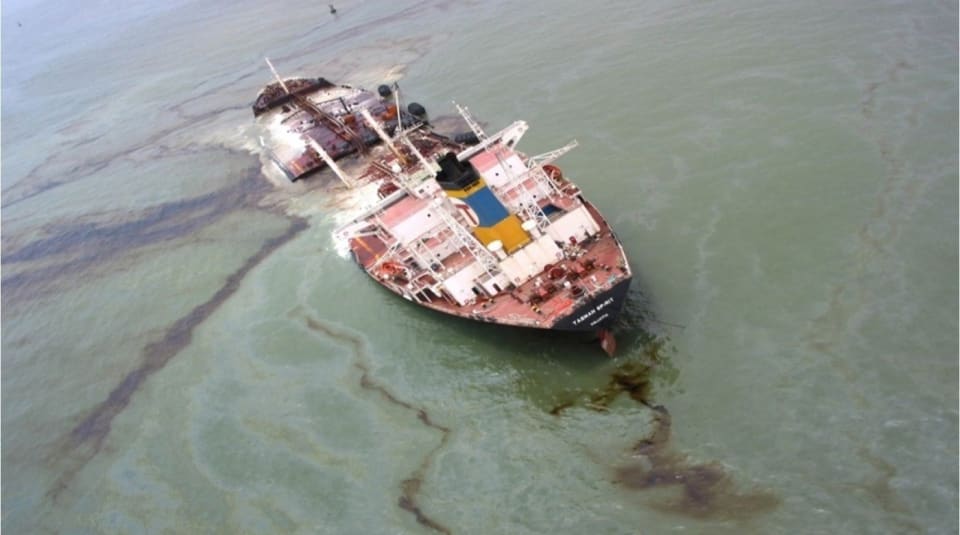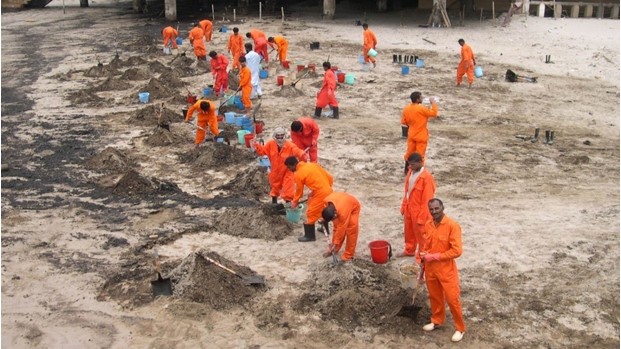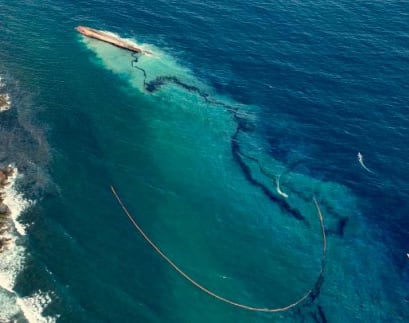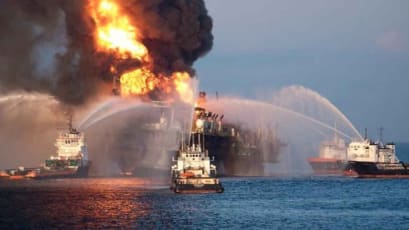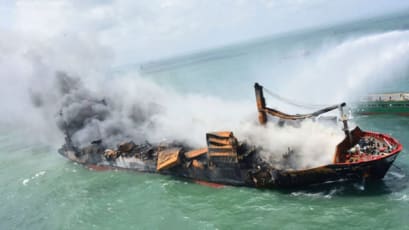Bridging the gaps: overcoming readiness challenges during the MV Tasman Spirit incident
The MV Tasman Spirit oil spill in 2003 released 30,000 metric tons of crude oil near Karachi, devastating 14 kilometres of coastline. The incident exposed regional resource gaps and lack of preparedness.
Background
In July 2003, the MV Tasman Spirit, a Greek-registered oil tanker carrying 67,535 metric tons of Iranian Light crude oil, ran aground in the access channel to Karachi Port, Pakistan, whilst travelling to Pakistan Refinery Limited (PRL). The incident resulted in the spill of approximately 30,000 metric tons of oil. The oil slick covered over 14 kilometres of coastline, affecting local communities, tourism, fisheries, and sensitive ecosystems.
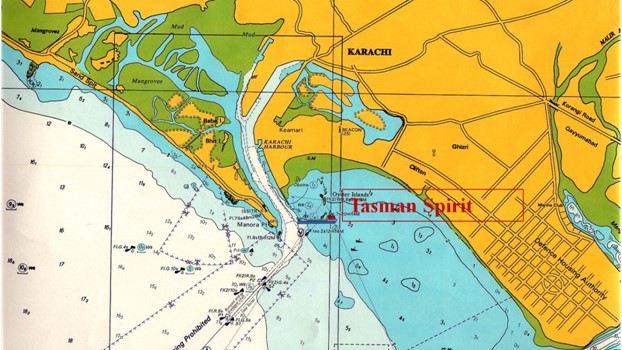
Response activation
Initial response efforts were led by the Pakistan Maritime Security Agency (PMSA), supported by the Karachi Port Trust and various government agencies. Despite swift action, the scale of the incident overwhelmed local resources, leading to significant delays in containment and recovery operations.
The context behind OSRL’s involvement
OSRL was activated by ITOPF under a third-party agreement. Through the deployment of our 5x5 Technical Advisor team, we provided technical expertise and strategic guidance to support the local authorities and Incident Management Team. Our role was instrumental in bridging gaps in local response capabilities, including access to specialised equipment and training of local teams to operate according to industry good practice.
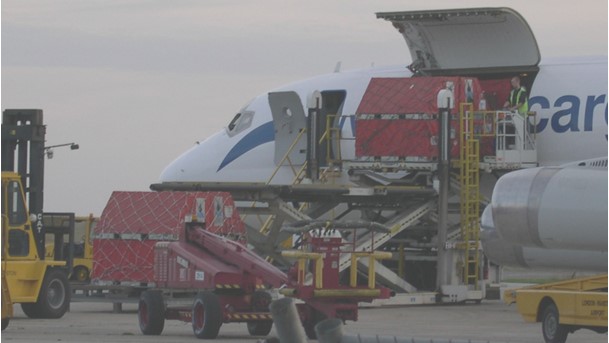
Incident Timeline
- 27 July: MV Tasman Spirit ran aground near Karachi Port, with significant damage to its hull. Over the next few weeks, a total of 25,000 tonnes of crude oil will be spilt.
- 13 August: The vessel splits into two, and the lightering operations recover 13,000 tonnes of oil.
- 15 - 17 August: Aerial dispersant application starts.
- 18 August: Operations to remove remaining oil inside vessel’s tank, 25 000 tonnes of oil are recovered.
- 22 August to 4 September: Further structural collapse of vessel and oil releases reported.
- 20 September: Intensive cleanup operations concluded, recovering over 75% of the spilled oil.
Main goals and priorities
- Identifying local sensitivities and priority areas.
- Containing the spill to prevent further environmental damage.
- Ensuring the safety of response personnel and volunteers.
- Restoring affected areas to their pre-spill condition.
- Enhancing stakeholder collaboration to streamline response efforts.
Unique challenges
- Limited availability of specialised oil spill response equipment, such as suitable vessels for offshore recovery.
- Uncoordinated efforts among stakeholders, with different affected beaches controlled by different authorities.
- Lack of contingency planning for large-scale spills, which was reflected in a lack of trained local teams. Issues included boat drivers unfamiliar with the towing of booms and local workers unfamiliar with the use of PPE.
- Adverse weather conditions, high current speed, and excessive amount of debris in the port impeding oil recovery.
- Lack of waste disposal routes and hygienic welfare facilities for responders, resulting in illness and subsequent lost work days.
Reflections from Jamaluddin bin Jaafar, OSRL Responder
It was my first time in Pakistan, and this response was one of the first responses attended by OSRL and EARL under the global alliance. We had to operate from a military airport for dispersant operations, so we obviously had restricted access. Intuitively, we made ‘friends’ with people, and observed who can help get things done, and who has the authority to provide resources, like providing a forklift for loading and unloading of equipment and having a supply of reliable workers for manual labour. Communication was a major challenge. We had to set clear rules for safety and behaviour, and arrived at a common understanding with the local labourers that they should stop work if they were feeling unwell, or had taken alcohol or drugs; we also had to help resolve any misunderstanding between workers so that the work can proceed without disruption. One of the challenges during the response was to convince people to use PPE. The brand new safety shoes issued to the local labourers were not worn, but instead, put up for sale at the weekend market! I was responsible for shoreline clean-up at a section of a recreational beach, and supervised about 50 workers. I had to first observe the natural setting of the beach, and made an interesting observation that crabs were still burrowing holes, thus renewing the surface layer of the sand and burying the oil – the surface clean-up had to be done much more quickly! Stakeholders were briefed daily at the end of the work shift, and there had to be obvious progress. Something as simple as the number of bags of waste collected everyday provided a visible difference and helped to keep the motivation and momentum during a prolonged response. I left after a 3-week rotation, while other colleagues continued with the work until we were demobilised a few months later.
Solution
Considering the diversity of challenges during this spill, the response strategy adopted had to be multifaceted and adaptable.
- Containment and recovery: Use of booms to contain the spill while oil recovery operations from the vessel’s tank were ongoing. Oleophilic disc skimmers were used In the harbour shoreline to recover oil from the water surface.
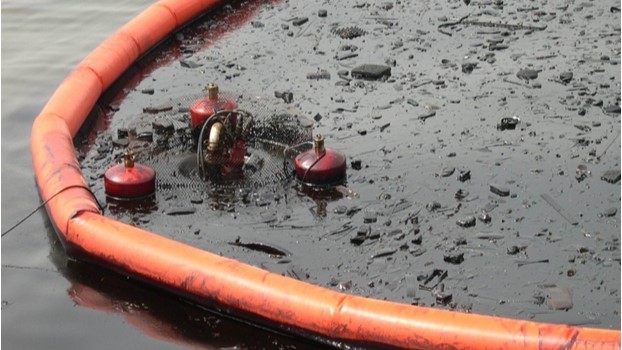
- Dispersant application: the Hercules aircraft was deployed from Singapore to support vessels with dispersant spraying, with a total of 16 tonnes of dispersant used throughout the response operations.
- Shoreline protection: Deployment of SCAT teams to assess impacted areas and prioritise cleanup activities. Responders performed manual recovery in affected coastline areas.
- Safety and waste management: Implementation of protocols for the collection, transportation, and disposal of oil-contaminated waste. OSRL trained local volunteer teams in PPE use and good practices.
- Stakeholder coordination: Establishment of a unified command structure to streamline communication and decision-making among involved parties.
Results
After weeks of intensive operations, significant progress was achieved with over 75% of the spilled oil recovered or removed from affected areas. Shoreline oiling was limited to a 10 mile radius around the grounded tanker and cleanup operations restored key coastal regions to near pre-spill conditions. Post-incident field surveys showed little to no impact caused to sensitive areas, including mangroves and salt pans.
Key learnings
The MV Tasman Spirit incident offered valuable insights into effective oil spill management:
- Early mobilisation: Timely deployment of resources and expertise is critical to mitigating environmental and economic impacts.
- Comprehensive planning: Developing detailed contingency plans and conducting regular training exercises will enhance readiness for large-scale incidents.
- Stakeholder collaboration: Coordinated efforts among government agencies, private sector entities, and international organisations are essential for an effective response.
- Local capacity building: Investing in local training and equipment ensures long-term preparedness and resilience. The incident served as a catalyst for strengthening national oil spill response capabilities.
Why choose OSRL
With decades of experience and a global team of experts, we provide proven solutions tailored to diverse challenges. Our extensive inventory of specialised equipment enables swift and effective responses to spills of all magnitudes. We collaborate with local organisations and regulatory bodies worldwide, ensuring seamless integration and alignment in response operations. By leveraging the latest advancements in spill response, we continuously enhance our methods and capabilities to address evolving environmental and industry needs.
Want to talk about spill response?
OSRL offers a holistic approach to response, with solutions for offshore, inland and subsea incidents. Our teams are trained to operate in all environments—from remote regions to extreme cold—and bring specialised capability to all aspects of spill response, including areas like oiled wildlife that require specific expertise. Our members get access to technical advisors, our Global Dispersant Stockpile, aviation services, and equipment hire solutions.
Find out more about our Membership options.

